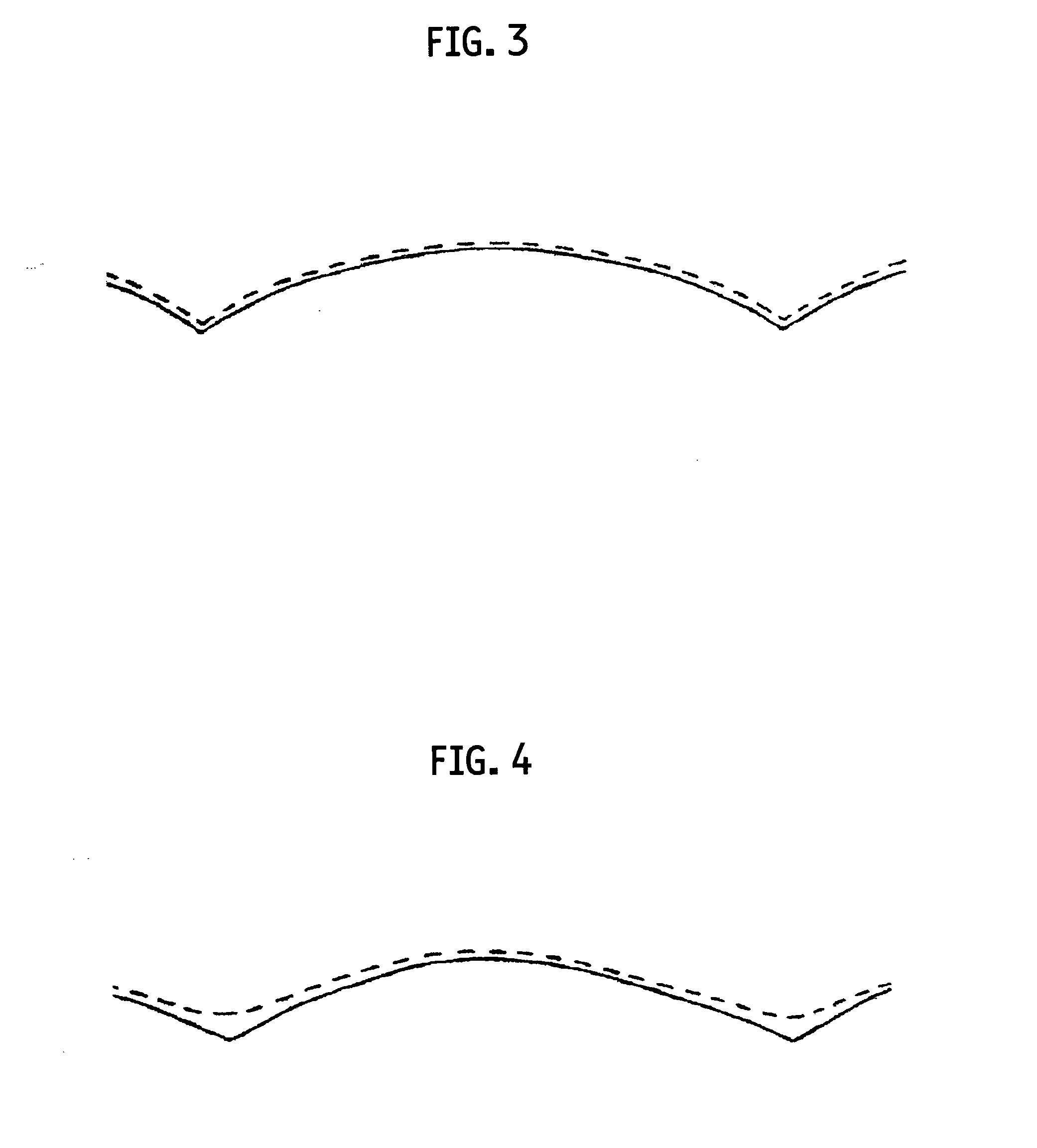Film having low refractive index film and method for producing the same, Anti-relection film and method for producing the same, coating liquid set for low refractive index film, substrate having microparticle-laminated thin film and method for producing the same, and optical member
a technology of low refractive index and film, applied in the direction of anti-reflective coating, cladding optical fibre, instruments, etc., can solve the problems of low performance of single-layer anti-reflection film, low refractive index of low-refractive index film, and inability to achieve low-refractive index film, excellent adhesiveness, and low refractive index
- Summary
- Abstract
- Description
- Claims
- Application Information
AI Technical Summary
Benefits of technology
Problems solved by technology
Method used
Image
Examples
example 1
1. Formation of Microparticle-Laminated Film
[0447]A silica aqueous dispersion liquid (trade name: SNOWTEX (ST) OUP, manufactured by Nissan Chemical Industries, Ltd.; silica sol) in which beaded silica microparticles having an average primary particle size of 8 nm as measured by a BET method were dispersed, was used as a microparticle dispersion liquid having the concentration adjusted to 1% by mass, without adjusting the pH. An aqueous solution of polydiallyldimethylammonium chloride (PDDA, manufactured by Sigma-Aldrich Company Ltd.) having the concentration adjusted to 0.1% by mass and the pH adjusted to 10, was used as an aqueous solution of electrolyte polymer.
[0448]As solid substrates, a silicon wafer (6PW-A1, manufactured by Sumco Corp.; 6 inches φ, 625 μm in thickness), a glass substrate (trade name: S1111, manufactured by Matsunami Glass Industries, Ltd.; 25 mm×75 mm×0.7 mm in thickness, refractive index at a wavelength of 550 nm is 1.54), and a polystyrene plate irradiated w...
example 2
[0456]First, a microparticle-laminated film was produced according to Example 1.
[0457]Next, a low refractive index film was produced according to Example 1, except that 50 g of diphenyldimethoxysilane (alkoxysilane (I), KBM202SS, manufactured by Shin-Etsu Chemical Co., Ltd.) was placed in a 300-ml three-necked round bottom flask, 81 g of MeOH was added thereto, the mixture was stirred at 25° C. to make the liquid uniform, subsequently 12.1 g of a 2.7 mass % aqueous solution of H3PO4 was added to the mixture, the resulting mixture was stirred for 4 hours at 25° C. to obtain a solution having a silane concentration of 35% (stock solution), and that the silane concentration of this solution was adjusted to 5% by mass to obtain a silicon compound solution.
[0458]The refractive index of the low refractive index film evaluated in the same manner as in Example 1 was 1.3, and the thickness was 110 nm. The turbidity of the low refractive index film evaluated in the same manner as in Example 1...
example 3
[0460]First, a microparticle-laminated film was produced according to Example 1.
[0461]Next, a low refractive index film was produced according to Example 1, except that 50 g of hexyltriethoxysilane (alkoxysilane (I), KBE3063, manufactured by Shin-Etsu Chemical Co., Ltd.) was placed in a 300-ml three-necked round bottom flask, 42 g of MeOH was added thereto, the mixture was stirred at 25° C. to make the liquid uniform, subsequently 7.4 g of a 0.05 mass % aqueous solution of H3PO4 was added to the mixture, the resulting mixture was stirred for 72 hours at 25° C. to obtain a solution having a silane concentration of 50% (stock solution), and that the silane concentration of this solution was adjusted to 1% by mass to obtain a silicon compound solution.
[0462]The refractive index of the low refractive index film evaluated in the same manner as in Example 1 was 1.3, and the thickness was 110 nm. The turbidity of the low refractive index film evaluated in the same manner as in Example 1 wa...
PUM
| Property | Measurement | Unit |
|---|---|---|
| average primary particle diameter | aaaaa | aaaaa |
| average primary particle diameter | aaaaa | aaaaa |
| particle size | aaaaa | aaaaa |
Abstract
Description
Claims
Application Information
 Login to View More
Login to View More - R&D
- Intellectual Property
- Life Sciences
- Materials
- Tech Scout
- Unparalleled Data Quality
- Higher Quality Content
- 60% Fewer Hallucinations
Browse by: Latest US Patents, China's latest patents, Technical Efficacy Thesaurus, Application Domain, Technology Topic, Popular Technical Reports.
© 2025 PatSnap. All rights reserved.Legal|Privacy policy|Modern Slavery Act Transparency Statement|Sitemap|About US| Contact US: help@patsnap.com



